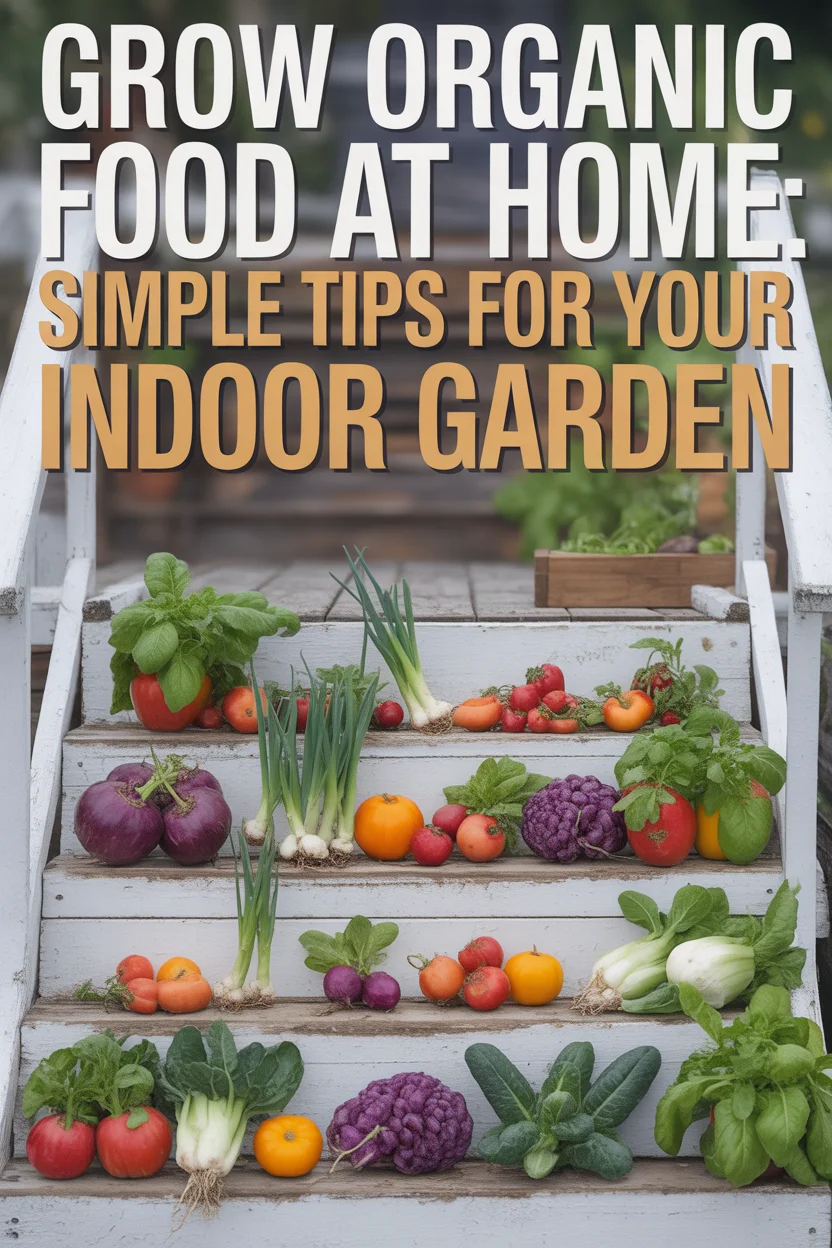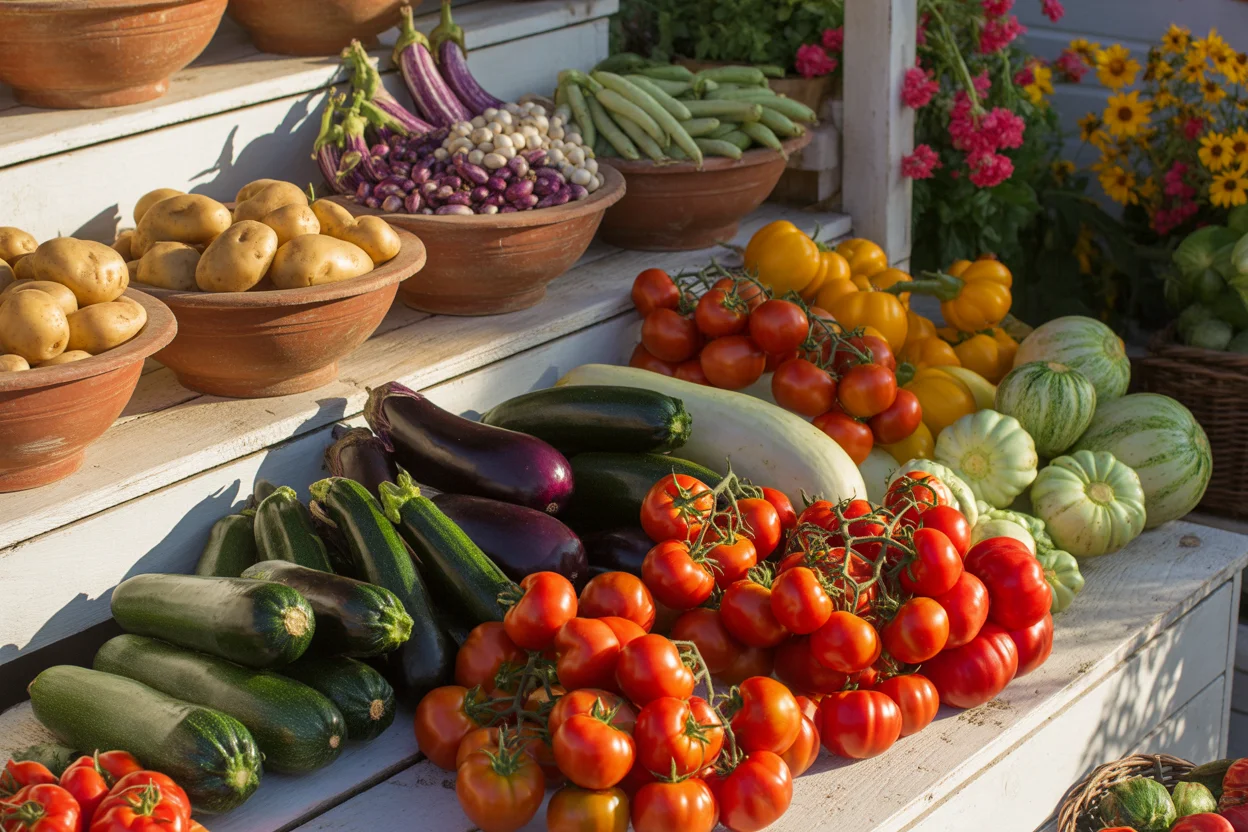Grow Organic Food at Home was something that I used to think was only for folks who had sunny yards or fancy greenhouses. But—big surprise—I was so wrong. Last winter, after yet another bunch of wilted grocery-store spinach, I searched for ways to get fresh stuff at home, indoors. Turns out, anyone can do it—even from a tiny apartment.
There’s a bunch of simple stuff that’ll get leafy greens (and more) growing inside. Seriously, it’s not nearly as difficult as learning how to grow delicious cherries at home or trying to manage a full outdoor patch of cucumbers from seeds. Let me walk you through the easiest way I found to start your own indoor garden, without being overwhelmed.
Table of Contents
What Are Sprouts?
Okay, imagine this: tiny baby plants packed with an unreal amount of nutrition. That’s a sprout. You get them when a seed just barely starts growing (usually in water or a wet paper towel on your kitchen counter, honestly). They’re not the same as microgreens—they’re younger, softer, sometimes a little nutty-tasting. I first tried sprouting with mung beans, after a friend left a forgotten bag behind. Grew faster than weeds on a summer sidewalk. Sprouts fit right into salads, sandwiches, or even to top that five-star ramen you make after a long day.
And here’s the kicker—they’re crazy easy to grow. No fancy skills needed. Some seeds, water, a jar, and patience. You can even toss them into pasta, eggs, or directly onto some avo toast if you wanna feel all chef-like. Simple, tasty, and totally yours. 
The Benefits of Growing Your Own Organic Sprouts
First, let me say: store-bought sprouts can be a bit sketchy. The shelf life, who-knows-what conditions, the price? Gimme a break. Growing your own organic food at home—yes, even in an apartment—means you know exactly what’s going into your food. Zero pesticides. Just good dirt, clean water, and a little TLC.
Second, sprouts give you a bouncy punch of vitamins, minerals, and antioxidants (trust me, your body will thank you later). You’ll notice the flavor too. Grocery store versions just can’t compete! Plus, it’s way more climate-friendly—you’re saving packaging and transportation time and money every sprout you eat.
Last, it’s honestly fun. I love peeking at my jar every morning, watching little shoots unfold. In a week or less you’ve got a fresh crop. There’s something pretty magical about it. My grandma would be impressed. 
Supplies to Grow Your Own Sprouts
You don’t need a cabinet full of gadgets. Honestly, that’s part of the charm. Here’s the few basics:
- Seeds (lentils, alfalfa, broccoli, radish, you name it—just make sure they’re organic sprouting seeds).
- A clean wide-mouth glass jar or sprouting tray.
- A mesh lid or clean piece of cheesecloth with a rubber band.
- Fresh, filtered water (your sprouts are picky about water quality).
Find all this and you’re set. No joke, I’ve even used an old spaghetti jar to start my first batch.
How to Make the Best Potting Mix for Potting Up or Moving Seedlings to Bigger Pots
This part’s more art than science—everyone’s got their “secret” potting mix. Here’s what’s worked best for me: I grab some good-quality organic potting soil, then I mix in a fistful of coconut coir for moisture control. Sometimes, I’ll stir in a bit of worm castings or compost for a nutrient bump (so rich, so earthy). Vermiculite or perlite? Optional, but I toss a handful in if I’ve got it, mostly to keep things light and fluffy.
Here’s a quick snapshot for you:
| Ingredient | Purpose | Easy Substitute | Good For |
|---|---|---|---|
| Organic potting soil | Main base | Garden soil (if clean) | Most veggies |
| Coconut coir | Moisture control | Peat moss | Seedlings |
| Compost | Nutrition | Worm castings | Everything |
| Perlite | Aeration | Sand | Drainage |
I sometimes just wing it with what I have, honestly. As long as my mix drains well and holds some moisture, it works for me!
One time, I moved my tomato seedling into a bigger pot and—after thinking I totally botched it with the wrong soil—it exploded into the biggest plant I’ve ever grown indoors. Guess homemade mixes really do work. 
Common Questions About Seed Starting Mix
People ask me all the time—like literally in my DMs, sometimes friends will text me at midnight!—what’s the deal with seed starting mix? Here’s what you actually need to know. Most commercially sold seed starting mixes are light, fluffy, and kinda boring-looking. That’s totally normal—they’re designed just for sprouting, not for long-term growing.
You can make your own at home for pennies. I use roughly half coconut coir (or peat), half vermiculite, then add a scoop of compost only if I’m feeling fancy. No synthetic stuff—just mother nature.
Don’t use garden dirt from outside for starting seeds indoors (speaking from experience here). I did this once thinking I was being thrifty and ended up with fungus gnats all over my kitchen. Not pretty.
Gardyn
Okay, this is that “smart garden” gadget you’ve seen floating around Instagram. I’ll be honest: my friend Becky swears by hers. The Gardyn takes the thinking out of the indoor grow game. It waters, it lights, it even tells you what your plants need using Wi-Fi (wait, plants are smarter than me now?). Put your seeds or “yCubes” in, wait, and boom—fresh lettuce or tomatoes, sometimes in weeks.
Great for people who kill houseplants out of forgetfulness (guilty, once or twice). But it’s a bit of a splurge, so maybe stick to simple jars and pots until you’re sure you wanna go high-tech. Still, it’s honestly cool to watch it do all the work. And you will find many Gardyn products that let you Grow Organic Food at Home ..
“I never imagined I would eat greens I literally picked in my kitchen with no mess. The taste? Seriously unbeatable—better than anything from the store.”
Hydroponics
If you’re up for a nerdy but rewarding new hobby, hydroponics might just be your jam. No dirt. Just water, nutrients, and some plants. Hydroponics is booming for indoor gardens, especially if you’re tight on space (tiny apartment, anyone?).
All you do is get a grow tray, water, and a little hydroponic fertilizer. There’s setups for every level—DIY old soda bottles or full-on towers. What really got me is you end up harvesting super clean greens, no washing needed. Plus the plants grow so fast it’s borderline magic.
Want more ideas? Take a look at how people are growing herbs like hydroponic basil at home or even check beginner tips for hydroponic microgreens indoors. The options are bonkers, and you don’t need a degree to get started.
Conclusion
So, growing organic food at home isn’t just doable—it’s honestly one of the most fun food experiments you can try. Start with sprouts, then branch out (pun fully intended) as you feel braver. You’ll taste the difference, save money, and feel way more clever than your supermarket neighbors. Plus, you can find even more down-to-earth advice in resources like Want To Grow Organic Food? Here Are Some Tips or just dive deep into your favorite new ways to grow potatoes.
Honestly, you’ve got everything needed to start eating the freshest food you’ve ever had, from the comfiest spot in your own home. What’s stopping you? Let’s get dirt—or water—on those hands and give it a whirl! 
FAQ about Grow Organic Food at Home
How much light do I need for an indoor garden?
Most leafy stuff (like lettuce, basil, and sprouts) loves a sunny windowsill. If you’ve got cloudy days, grab a cheap grow light. I glued mine to an old shelf, no fancy mounting needed.
Is tap water okay for sprouts?
Usually yes, but if your water smells super chlorinated, switch to filtered stuff. My sprouts pouted until I did.
How do I prevent mold in my sprouts?
Rinse them twice a day with fresh water. Don’t leave them soaked. If you see fuzzy bits, toss the batch and start over. (It happens even to me—they’re finicky.)
Can I still grow stuff if I have zero outside space?
Totally. I grow tomatoes, herbs, and potatoes in buckets on my fire escape and kitchen counter thanks to setups like this indoor potato guide. Even a sunny windowsill lets you grow food in five-gallon buckets.
What’s the easiest veggie to start with indoors?
Sprouts! Seriously. Mung beans or radish seeds. Plant, water, eat in a week. Foolproof.

